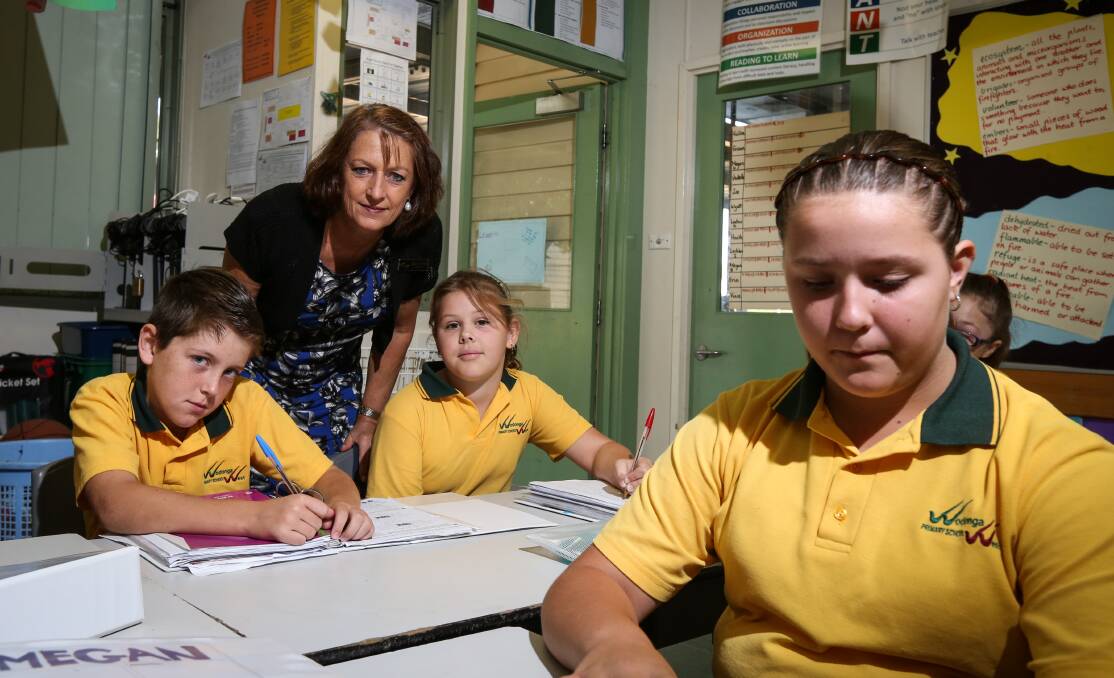A MORE tailored approach is lifting students at Wodonga's smallest primary school to better NAPLAN results.
Subscribe now for unlimited access.
or signup to continue reading
Wodonga West Primary School principal Jocelyn Owen said her institution was one of few on the Border to have a "substantially above average gain" in the numeracy and literacy tests for 2015.
Australian Curriculum, Assessment and Reporting Authority chief executive Robert Randall told Mrs Owen "gains of this magnitude are significant and worthy of highlighting and acknowledgement".
The results showed that while the school was below average against national benchmarks it was largely above average when compared with similar schools.

Mrs Owen, who has been principal since before NAPLAN's introduction in 2008, said the results were reward for the school's approach.
"We've been working for a number of years on coaching and mentoring of staff and we've worked extremely hard at knowing every individual student and where they sit on the development continuum of learning," Mrs Owen said.
"We've put a lot of resources into concrete materials which students can use to understand the concepts were teaching.
"We looked really closely at the NAPLAN tests and how to best support students to understand the questions being asked and to break the questions down because many questions involve multiple sets of skills which students have to master."
The use of NAPLAN for testing of grades 3, 5, 7 and 9 has been criticised for stressing students, pitting schools against each other and taking focus away resource needs.
Mrs Owen feels it has merit and is valued by parents.
"I think it's a really valid tool which we use with our other assessment tasks," she said.
"It helps us to validate where the children sit and I would believe it's quite accurate.
"It can inform us of where gaps are in our curriculum.
"If we have students that don't perform well on a particular question we can look at closing the gap.
"We can look at boys versus girls and the relative gain which shows how our students have grown from year 3 to year 5."

